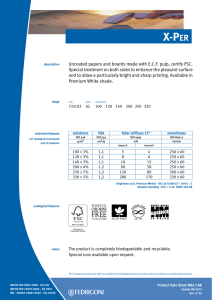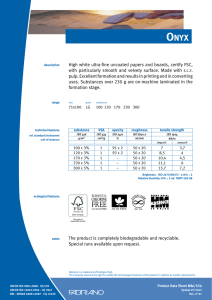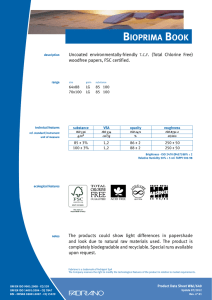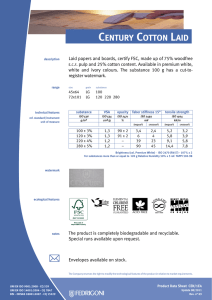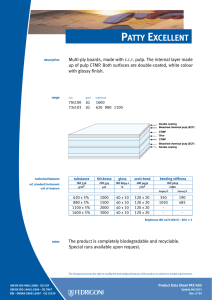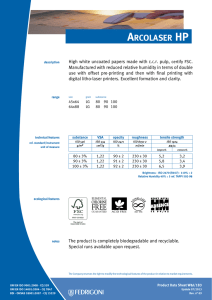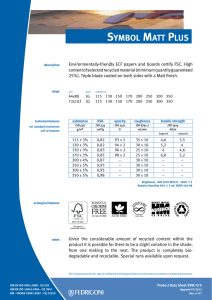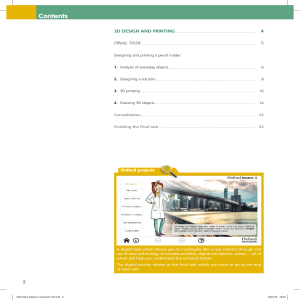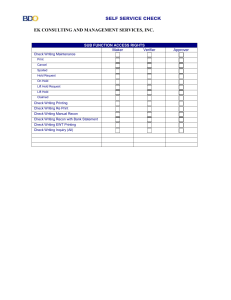Sirio Black-White
Anuncio
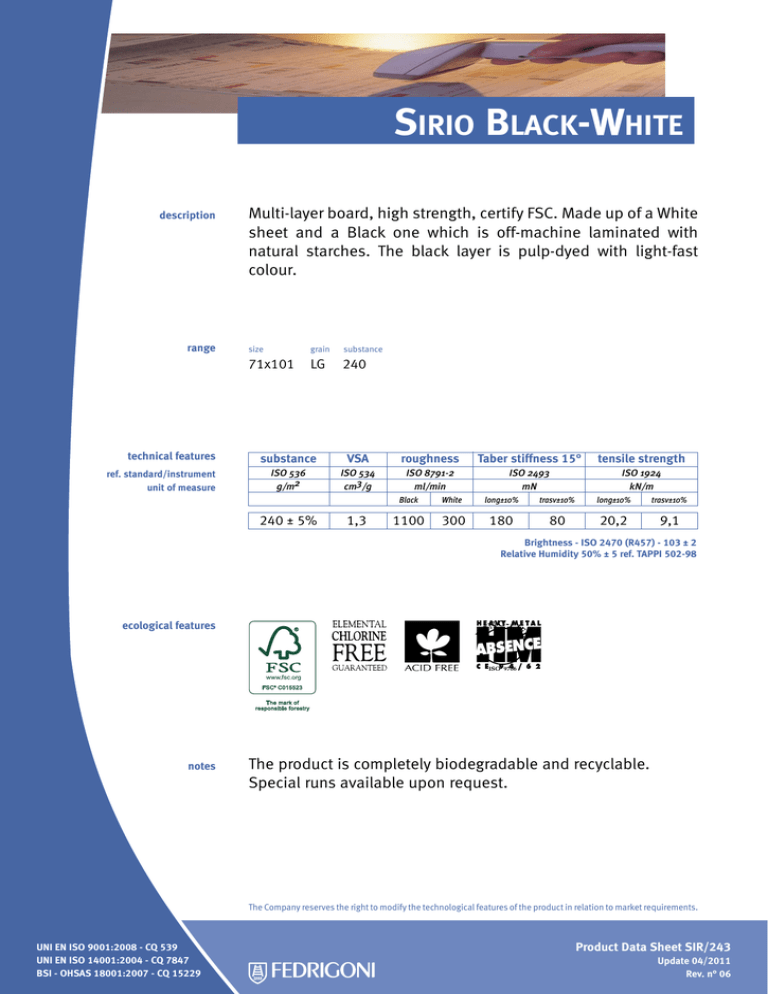
Sirio Black-White description range Multi-layer board, high strength, certify FSC. Made up of a White sheet and a Black one which is off-machine laminated with natural starches. The black layer is pulp-dyed with light-fast colour. size grain substance 71x101 LG 240 technical features ref. standard/instrument unit of measure substance ISO 536 g/m2 VSA roughness Taber stiffness 15° tensile strength ISO 534 cm3/g ISO 8791-2 ml/min ISO 2493 mN ISO 1924 kN/m 240 ± 5% 1,3 Black White 1100 300 long±10% trasv±10% long±10% trasv±10% 180 80 20,2 9,1 Brightness - ISO 2470 (R457) - 103 ± 2 Relative Humidity 50% ± 5 ref. TAPPI 502-98 ecological features notes The product is completely biodegradable and recyclable. Special runs available upon request. The Company reserves the right to modify the technological features of the product in relation to market requirements. UNI EN ISO 9001:2008 - CQ 539 UNI EN ISO 14001:2004 - CQ 7847 BSI - OHSAS 18001:2007 - CQ 15229 Product Data Sheet SIR/243 Update 04/2011 Rev. n° 06 Sirio Black-White is a board created for albums although it is also perfect for packaging, covers and inserts. applications Can be used without problems with the main printing systems: letterpress, offset, blind embossing, hot foil stamping, thermography and screen printing. The macro-porous surface suggests the use of oxidative drying inks. For hot foil stamping reproductions, only for the Black side, in specific hygrometric conditions, or using unsuitable foils it can arise problems like oxidation or speckled printing, especially using colors like Golden, Silver or Metallic. It is recommended the consultation with your foil providers. In order to give total solution to this problem it is necessary to isolate the film for hot stamping printing from the paper: it can be done either with a plastic coated surface, a double hot stamping printing (making sure to use a white or transparent film before the printing metal band), or with a printing water-based or solvent varnish. printing suggestions Varnishing and plastic laminating must be assessed in advance. The varnish coated with an offset machine is almost fully absorbed and therefore it does not improve gloss or protection. Screen-printing varnishing achieves better results, although it is often necessary to perform two shots to achieve a distinctly evident result. The surface roughness typical of uncoated papers may give rise to micro defects with plastic laminating caused by incomplete adhesion of the film to the substrate. Good results with major processing operations such as: cutting, diecutting, scoring and glueing. We remind you that although the black surface of “Sirio Black-White” remains normal, when it is forcefully rubbed against another white surface, black particles might be rubbed off. converting suggestions

